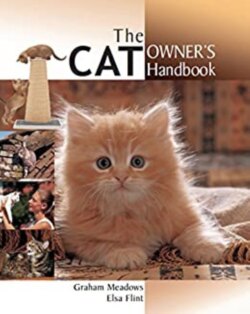Читать книгу The Cat Owners Handbook - Graham Meadows - Страница 9
На сайте Литреса книга снята с продажи.
Cat worship and culture
ОглавлениеMany thousands of years ago a cat cult was well established in ancient Egypt. There was a feline goddess, Mafdet, a snake-killer and protector of the pharaoh in the royal palace, whose pictures appear in magic formulas carved on pyramid chambers of the Fifth and Sixth Dynasties (before 2280BC).
Cats were worshipped in ancient Egypt, and many were mummified to accompany their owners into the next world.
The ancient Egyptians recognized the cat’s role as a guardian of grain stores, protecting the animal by law and keeping sacred cats in their temples. In the temple of the cat goddess Bast or Pasht, from which the word ‘puss’ is said to have arisen, many thousands of cats were mummified and laid in tombs. Excavations at other sites have also revealed large numbers of mummified cats, and the height of the cat cult is thought to have occurred at around 500BC, when many other animals were also a subject of worship. It was once thought that all the mummies were of household cats that had died from natural causes and whose remains had been presented to the temple by their mourning owners. More recently researchers have concluded that many of them were cats specially bred for sacrifice, because they had died from a broken neck and many were merely kittens.
From that time on there is plenty of evidence to show that cats became well established in Egyptian homes. A painting at Thebes, in the tomb of the harbour-master May and his wife Tui (dated around 1600BC), portrays a ginger cat sitting beneath Tui’s chair. It wears a collar, and its leash is tied to a chair leg. The inference is that it was a pet, although this could be disputed.
A picture in the tomb of someone named Baket (dated around 1500BC) depicts a house attendant watching a cat that is eyeing a rat. Other tombs in Thebes also contain paintings of cats. One of them, dated at 1400BC, depicts a kitten sitting on the lap of the sculptor Ipuy. There are also some interesting, though inconclusive, artifacts to suggest that by this period in history cats were not only kept as pets in homes, but also used to help people to hunt. At least three tomb paintings, one of them in the tomb of the sculptor Nebuman (around 1400BC), show cats apparently participating in the action while wildfowlers are using throwing sticks to catch and kill ducks and other birds. Were these cats helping to flush out game from the reed beds and/or helping to retrieve it? A sceptic might suggest that they were simply there to take advantage of a free lunch.
Don’t be surprised to hear your mother cat purring loudly when she suckles her kittens.
